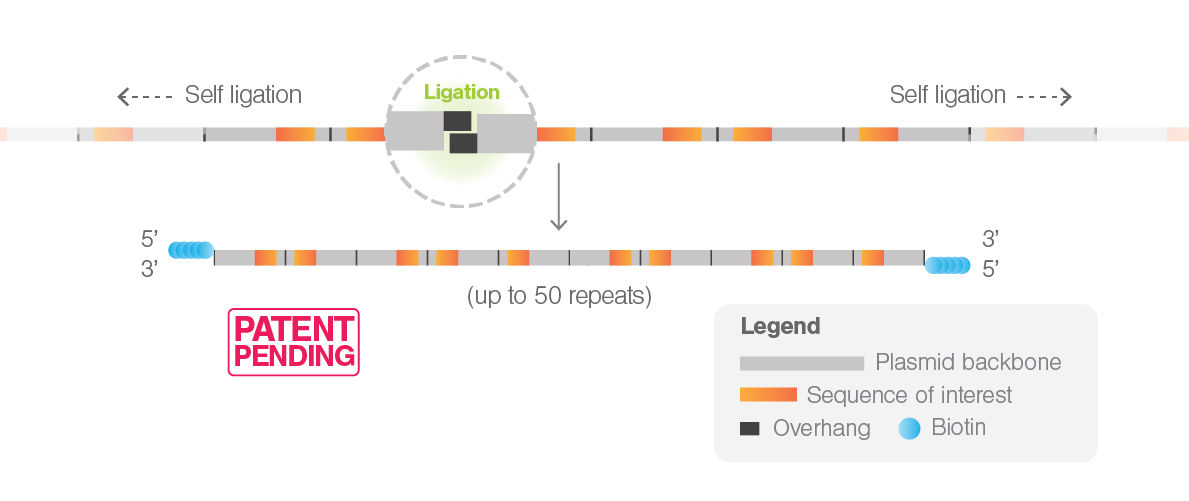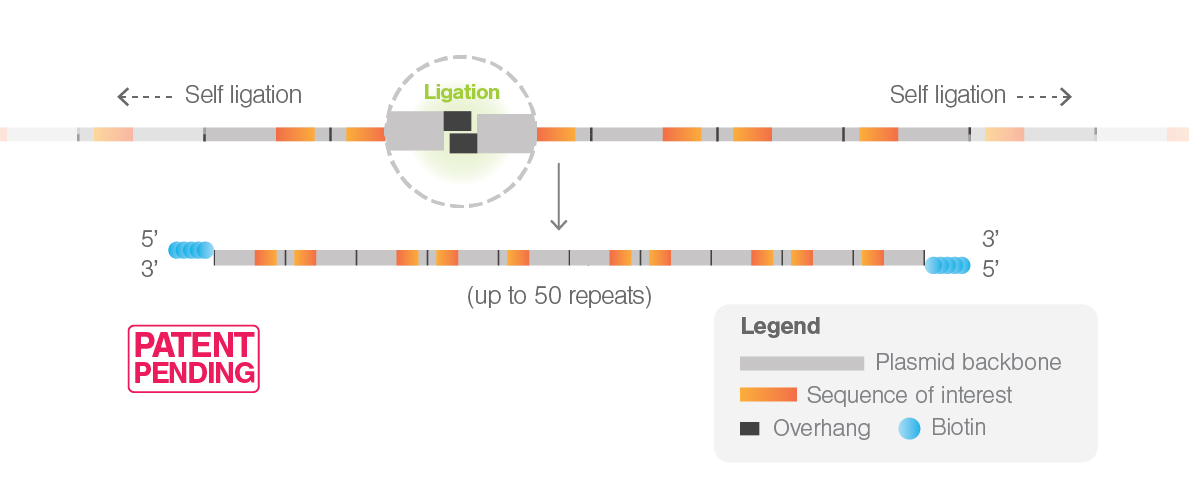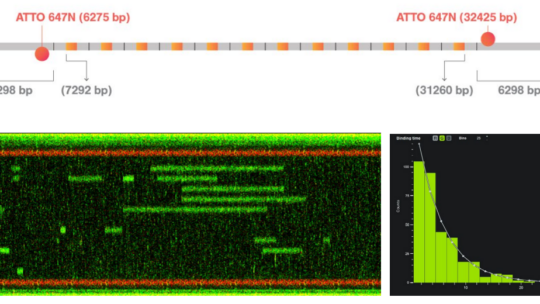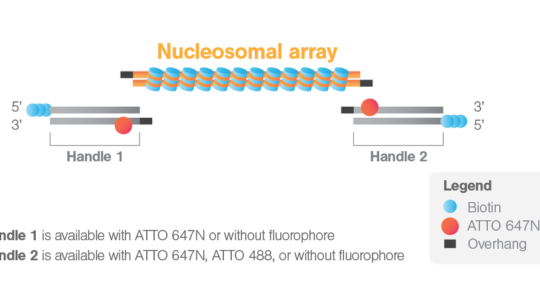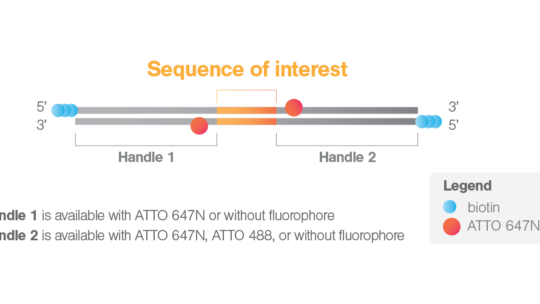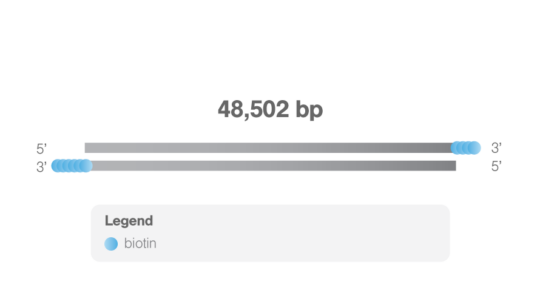DNA repeat assembly is a highly efficient system to quickly build DNA repeat arrays – up to 120 kb – from a linear DNA fragment with cohesive DNA overhangs. Using this kit, DNA fragments of interest are ligated to copies of themselves multiple times and then biotinylated by ligation to DNA adaptors with a compatible DNA overhang on one end and five biotin moieties on the other.
The incorporation of five biotins in the adaptor is designed in a proprietary, optimized configuration to enhance the binding efficiency. This configuration enables fast tethering of the longest DNA repeat constructs. Furthermore, it ensures high stability of the formed tethers, enabling long data acquisition sessions. Binding events of fluorescent proteins to the DNA repeats of the array can then be measured in parallel with the C-Trap, greatly increasing the throughput of the experimental data acquisition.
The number of repeats assembled into an array depends on the size of the DNA fragment and the type of overhangs used for the ligation. With a DNA fragment of 2-3 kb, the DNA repeat assembly kit typically produces arrays ranging from 20 to 50 repeats.
For a detailed description of high-throughput dynamic single molecule measurements using the DNA repeat assembly kit, download the application note here.
The kit includes one of three biotinylated DNA adaptors, a DNA Ligase enzyme, a 10x Assembly buffer and an EDTA buffer solution.
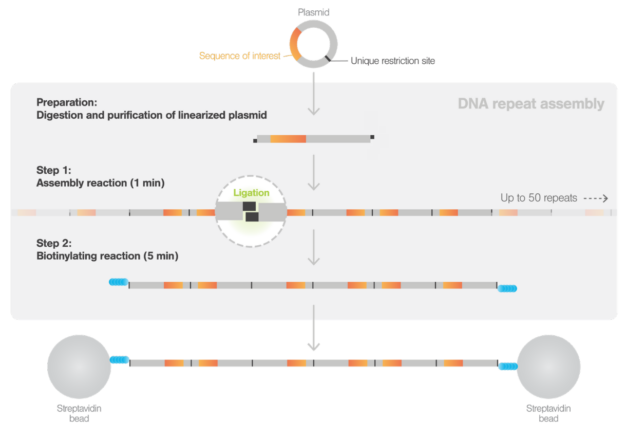
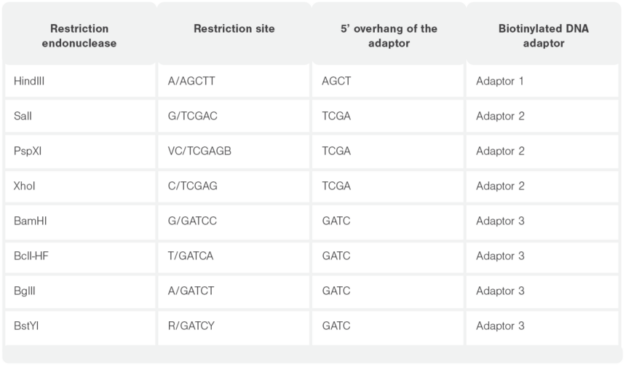
The kit enables 5 assembly reactions. Each reaction can be used for 5 experimental sessions on the C-Trap.
Estimated 1-4 weeks delivery time.

